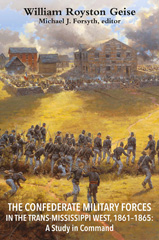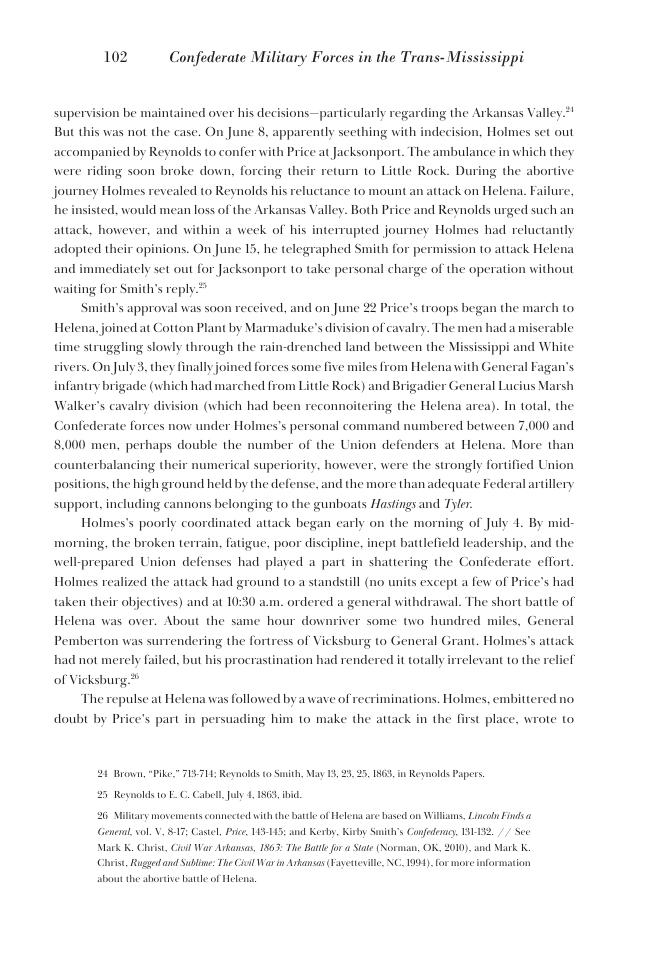2022 - Savas Beatie
eBook
Digital Version
Herunterladen | Kopieren/Einfügen | Drucken
The Confederate Military Forces in the Trans-Mississippi West, 1861-1865 : A Study in Command
240 p.
- William Royston Geise was a young Ph.D. candidate at the University of Texas at Austin in the early 1970s when he researched and wrote The Confederate Military Forces in the Trans-Mississippi West, 1861-1865: A Study in Command in 1974. Although it remained unpublished, it was not wholly unknown. Deep-diving researchers were aware of Dr. Geise's work and lamented the fact that it had never been published. In many respects, studies of the Trans-Mississippi Theater are only now catching up with Geise.This intriguing study traces the evolution of Confederate command and how it affected the shifting strategic situation and general course of the war. Dr. Geise accomplishes his task by coming at the question in a unique fashion. Military field operations are discussed as needed, but his emphasis is on the functioning of headquarters and staff-the central nervous system of any military command. This was especially so for the Trans-Mississippi.After July 1863, the only viable Confederate agency west of the great rive
- r was the headquarters at Shreveport. That hub of activity became the sole location to which all isolated players, civilians and military alike, could look for immediate overall leadership and a sense of Confederate solidarity. By filling these needs, the Trans-Mississippi Department assumed a unique and vital role among Confederate military departments and provided a focus for continued Confederate resistance west of the Mississippi River.The author's work mining primary archival sources and published firsthand accounts, coupled with a smooth and clear writing style, helps explain why this remote department (referred to as Kirby Smithdom" after Gen. Kirby Smith) failed to function efficiently, and how and why the war unfolded there as it did.Trans-Mississippi Theater historian and Ph.D. candidate Michael J. Forsyth (Col., U.S. Army, Ret.) has resurrected Dr. Geise's smoothly written and deeply researched manuscript from its undeserved obscurity. This edition, with its original annotations and Forsyth's updat
- ed citations and observations, is bolstered with original maps, photographs, and images. Students of the war in general, and the Trans-Mississippi Theater in particular, will delight in its long overdue publication. [Publisher's text].
- Special access authorizations may apply; please contact us for further information.
-
Informationen
ISBN: 9781954547438
THEMENBEREICHE



